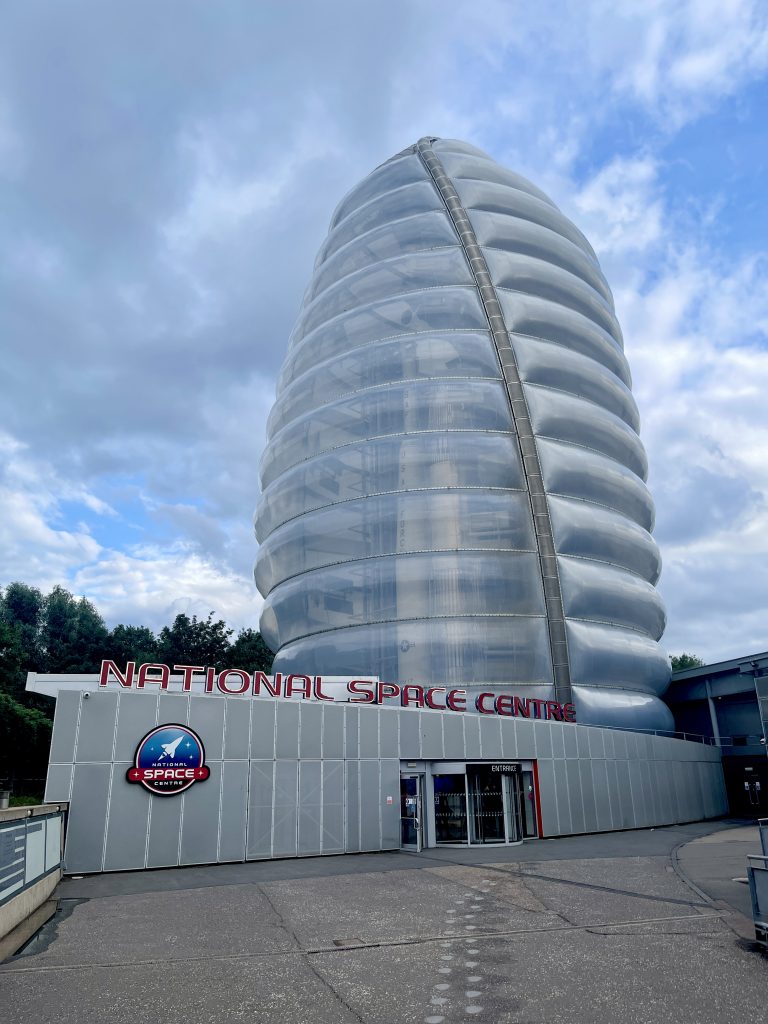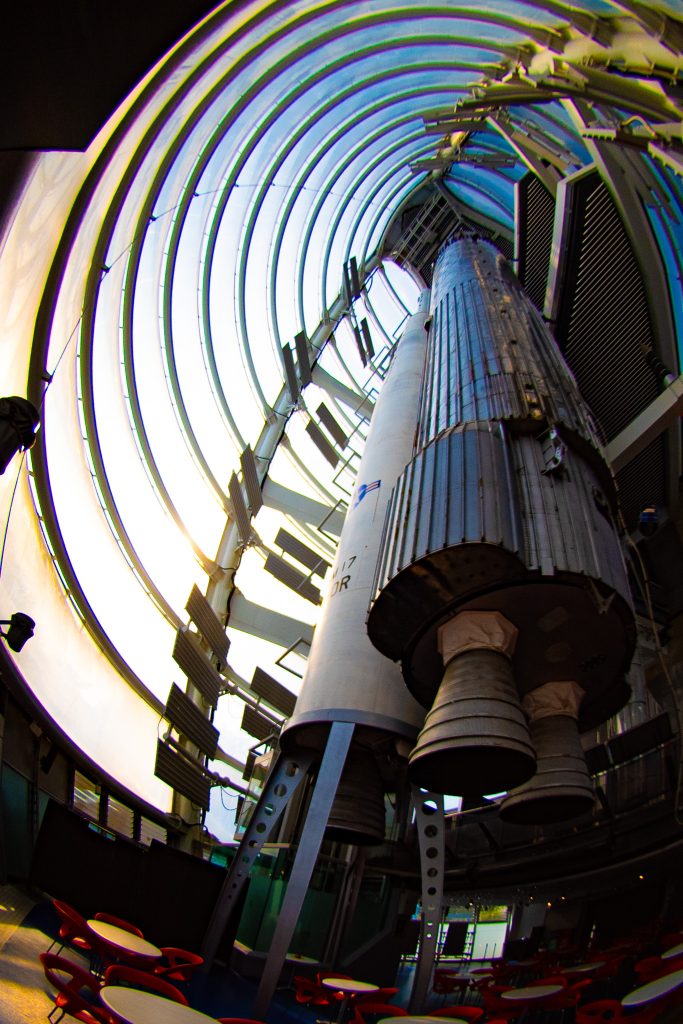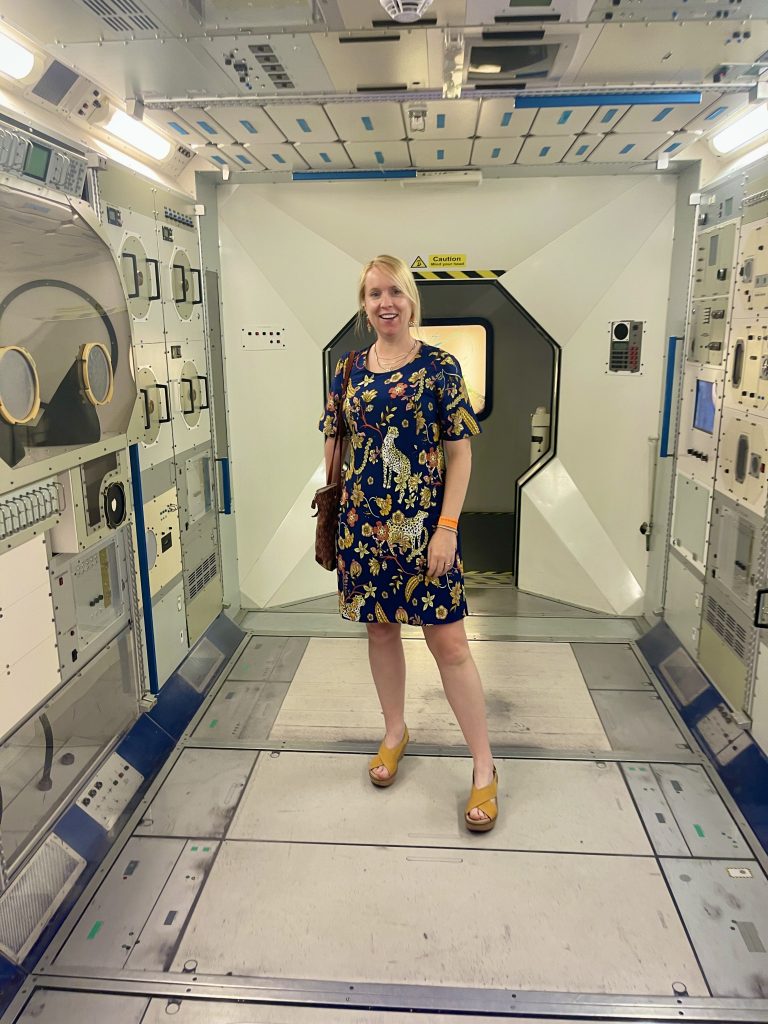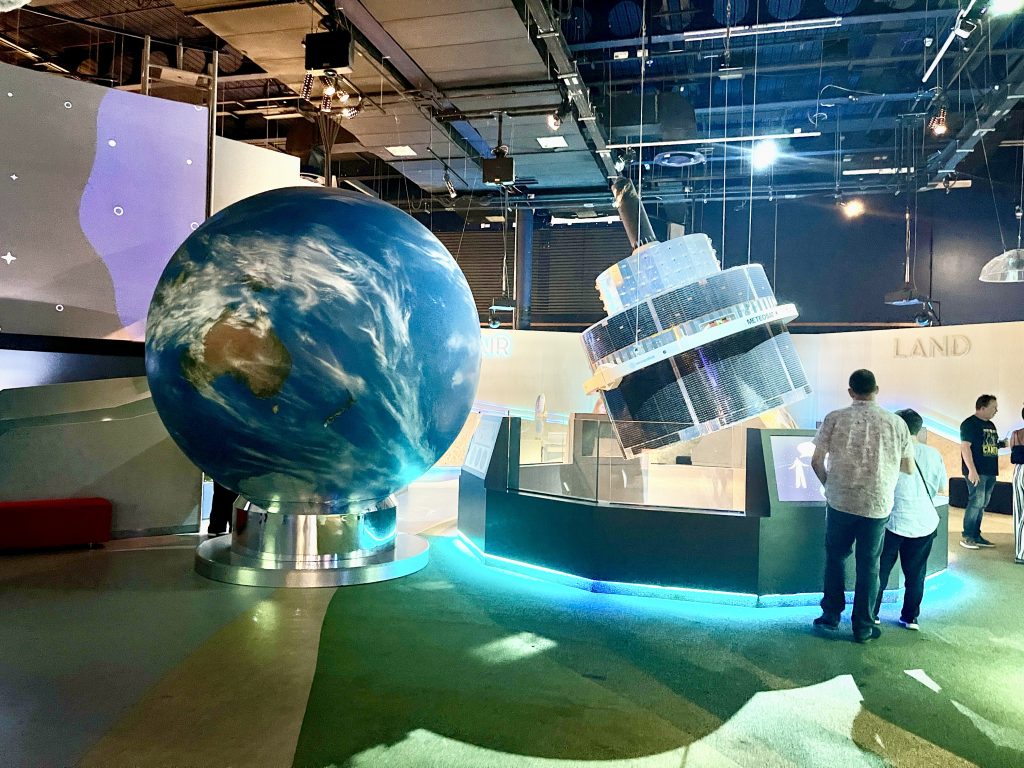Living in Leicester, it’s hard to miss the striking, futuristic structure of the National Space Centre. With its towering rocket-shaped dome rising above the skyline, it’s a place many locals pass by often—but, like me, perhaps haven’t ventured into. I’m a little embarrassed to admit that, despite having lived in the city for years, I’d never actually set foot inside.
I’m no science buff, and space had always felt a bit… distant. But when the opportunity arose to explore the centre, curiosity got the better of me. I decided it was time to see what all the fuss was about—and what exactly lies behind those iconic walls.

Picture credit: Pukaar Magazine
Let me say this: nothing prepared me for the sheer scale and wonder of what I found at the National Space Centre.
The moment I entered, I was greeted by the jaw-dropping sight of a 42-metre rocket stretching high into the building’s core. I’d seen pictures of it before, of course, but standing there in its presence was something else entirely. There’s something humbling and almost spiritual about being in the shadow of such an engineering marvel. It reminded me of seeing a famous painting—like a Picasso or Da Vinci. You can study it in books and online, but being there in front of the real thing… it ignites your imagination in a way nothing else can.

Picture credit: National Space Centre
In fact, there are two rockets inside the centre: the Blue Streak and Thor Able, each with its own place in space history. Alongside them are countless fascinating artefacts: a genuine piece of moon rock, a detailed mock-up of the Apollo Lunar Lander, and even a Russian space toilet—because, yes, even astronauts need facilities!
One of the real highlights of my visit was the Sir Patrick Moore Planetarium, the largest in the UK. Here, I had the privilege of attending the premiere of One Step Beyond: A Journey to Mars, a short film voiced by none other than Leicestershire- born Hollywood actor Richard Armitage. The show was immersive and spellbinding, taking us on an emotional journey through the hopes, challenges, and sheer brilliance of humanity’s ambition to reach the red planet. With the help of an adorable animated guide—Ziggy the Astronaut Toy—even the youngest viewers were captivated.
Inside the planetarium, surrounded by stars and infinite galaxies, it’s easy to forget you’re still in the middle of Leicester. There’s something calming and otherworldly about it all—like taking a deep breath and blasting off into another world.
If you’ve ever wondered why Leicester was chosen as the home of the National Space Centre, it may surprise you to learn that the city has been a global hub for space research for over 60 years. Thanks to pioneering work at the University of Leicester, a Leicester-built instrument has been operating in space every single year since 1967. That’s no small feat—and certainly one more reason to be proud of our city.

Picture credit: Louise Steel
The National Space Centre itself opened in 2001, officially launched by former NASA astronaut Jeffrey A. Hoffman, and the cutting-edge planetarium was unveiled in 2012 by the legendary astronomer Sir Patrick Moore.
During my visit, I was reminded not only of the astonishing achievements of space exploration but of how lucky we are to have such a facility right on our doorstep. It’s easy to take these local landmarks for granted, but this one is truly special.

Picture credit: Pukaar Magazine
If you’re searching for the ultimate escape—from Earth and everyday life—look no further than Leicester’s National Space Centre. Whether you’re a science enthusiast, a curious explorer, or just someone looking to be inspired, there’s something here for everyone.
And if you’ve only ever admired the building from the outside, trust me: the inside is even better. A world of wonder is waiting to be discovered. After all, if humans can walk on the moon, surely stepping through the doors of the National Space Centre isn’t too big a leap.
For more information, visit: www.spacecentre.co.uk




